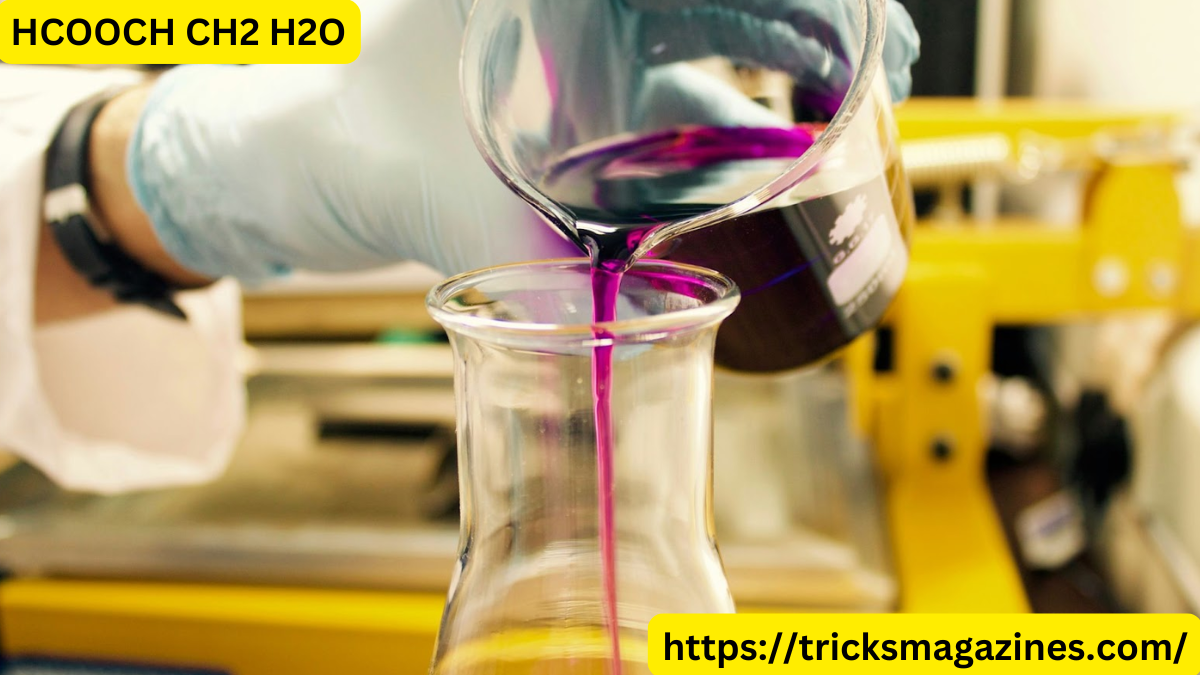The chemical formula HCOOCH2H2O represents a specific molecular compound that may appear unusual at first glance. It consists of three distinct groups: a formate ester group (HCOO), a methylene group (CH2), and a water molecule (H2O). While this molecular combination might not correspond to a single, widely-known compound in its entirety, it highlights the connection between organic chemistry, esterification reactions, and the role of water in organic systems. This article will explore the structural aspects, potential chemical reactions, and real-world applications of the components within HCOOCH2H2O.
The Structure of HCOOCH2H2O
To understand the significance of HCOOCH CH2 H2o, it’s important to break it down into its constituent groups. The first part of the molecule is HCOO, which represents a formate group. The formate group is an ester derived from formic acid (HCOOH), in which a hydrogen atom is replaced by a methyl group. In this case, the esterification results in a formate ester structure.
Next, the CH2 group refers to a methylene group, a simple structure consisting of a carbon atom bonded to two hydrogen atoms. Methylene groups often serve as linkers between various parts of molecules and can be found in a wide variety of organic compounds.
Finally, H2O represents a water molecule, which is often involved in chemical reactions such as hydrolysis or esterification. Water’s role is critical in these reactions, as it can break down ester bonds or contribute to hydration reactions.
Chemical Reactions Involving HCOOCH2H2O
A compound like HCOOCH2H2O could potentially undergo a variety of chemical reactions, particularly those involving ester formation, hydrolysis, or hydration. One important reaction type to consider is esterification, which occurs when an alcohol reacts with a carboxylic acid to form an ester. In this case, the ester HCOOCH2 could be formed by an esterification reaction between formic acid and an alcohol such as methanol. The role of water in this reaction is crucial, as it is a byproduct of the esterification process and could be involved in subsequent reactions.
Another important reaction type is hydrolysis, where an ester reacts with water to break the ester bond. In the presence of water, the ester group could be broken down, leading to the regeneration of the original formic acid and methanol components. In this case, the water molecule plays a pivotal role in breaking down the ester bond, which is a key reaction in many biological and industrial processes.
The Role of Water in Ester Reactions
Water’s involvement in ester reactions cannot be overstated. In the case of HCOOCH2H2O, water could potentially serve as both a reactant and a product, depending on the nature of the chemical process involved. Esterification typically produces water as a byproduct, while hydrolysis consumes water to break down the ester into its constituent acid and alcohol.
Water also plays a crucial role in aqueous phase reactions, where reactions occur in the presence of water as the solvent. In aqueous chemistry, water molecules are often involved in various catalytic processes and can help facilitate the movement of ions or molecules within the system.
The Significance of HCOOCH2H2O in Organic Chemistry
In organic chemistry, the combination of functional groups such as esters, alcohols, and water molecules is incredibly common. The HCOOCH2H2O structure could represent a variety of organic reactions or compounds where these groups play significant roles. For instance, esterification reactions, which are essential in the synthesis of biofuels, perfumes, and pharmaceuticals, often involve the formation of similar structures.
In addition to its role in synthetic chemistry, HCOOCH2H2O could also be involved in biochemical processes. Many biochemical reactions, including those in living organisms, involve the hydrolysis of esters to release energy or to form other important molecules. For example, ester bonds are broken in biological systems during digestion or the breakdown of fats.
Industrial and Biochemical Applications
The compound HCOOCH2H2O, like many other simple organic molecules, could have numerous applications in both industrial and biochemical processes. One potential application could be in the production of biofuels. Many biofuels are derived from esterification reactions between fatty acids and alcohols, and compounds like HCOOCH CH2 H2o may represent intermediates in such processes.
Additionally, water’s involvement in the breakdown of ester bonds is critical in various industrial applications. Hydrolysis reactions are commonly used in the production of soaps, detergents, and other chemicals. In these reactions, esters like HCOOCH2 are broken down by water to produce alcohols and acids, which can then be further processed into useful products.
Conclusion
The molecular structure HCOOCH2H2O represents an ester group, a methylene linker, and a water molecule. These components are key players in various chemical reactions, including esterification and hydrolysis, which are fundamental to both industrial processes and biological systems. Whether it’s in the production of biofuels, the breakdown of fats, or the formation of key biochemical molecules, the interaction between esters, alcohols, and water is vital. Understanding compounds like HCOOCH2H2O enhances our ability to manipulate these reactions for practical applications in the fields of chemistry, biology, and industry.





